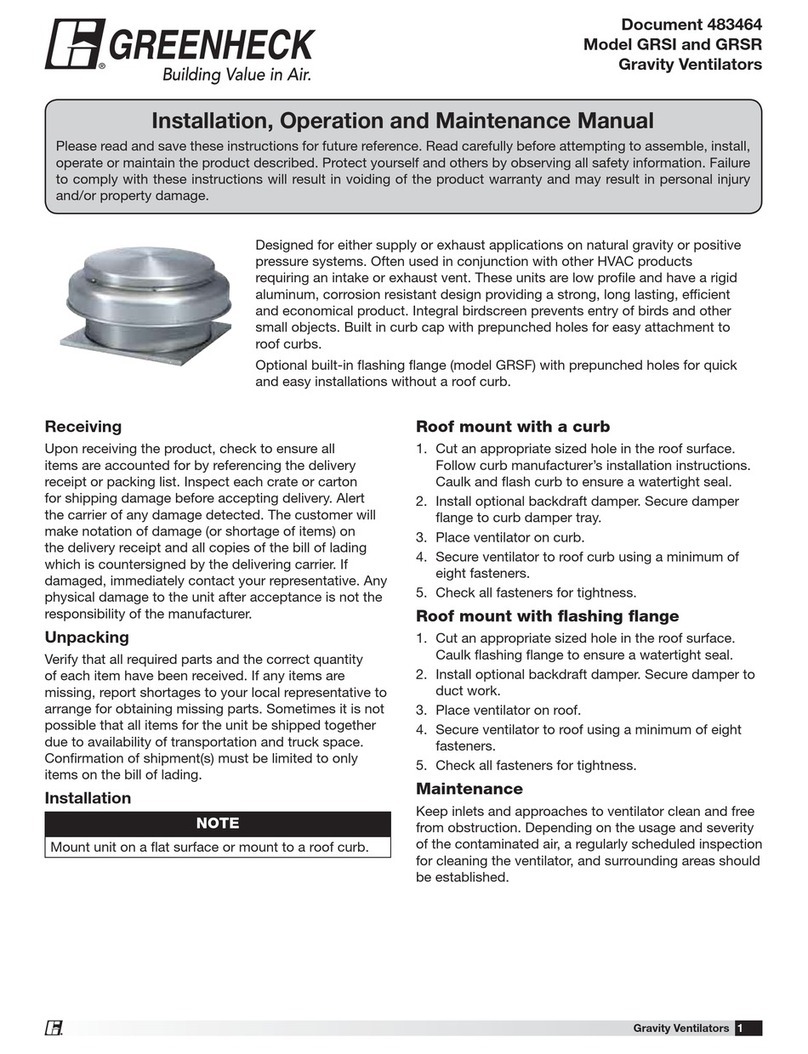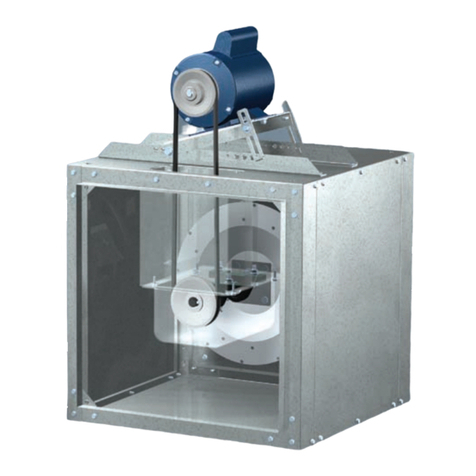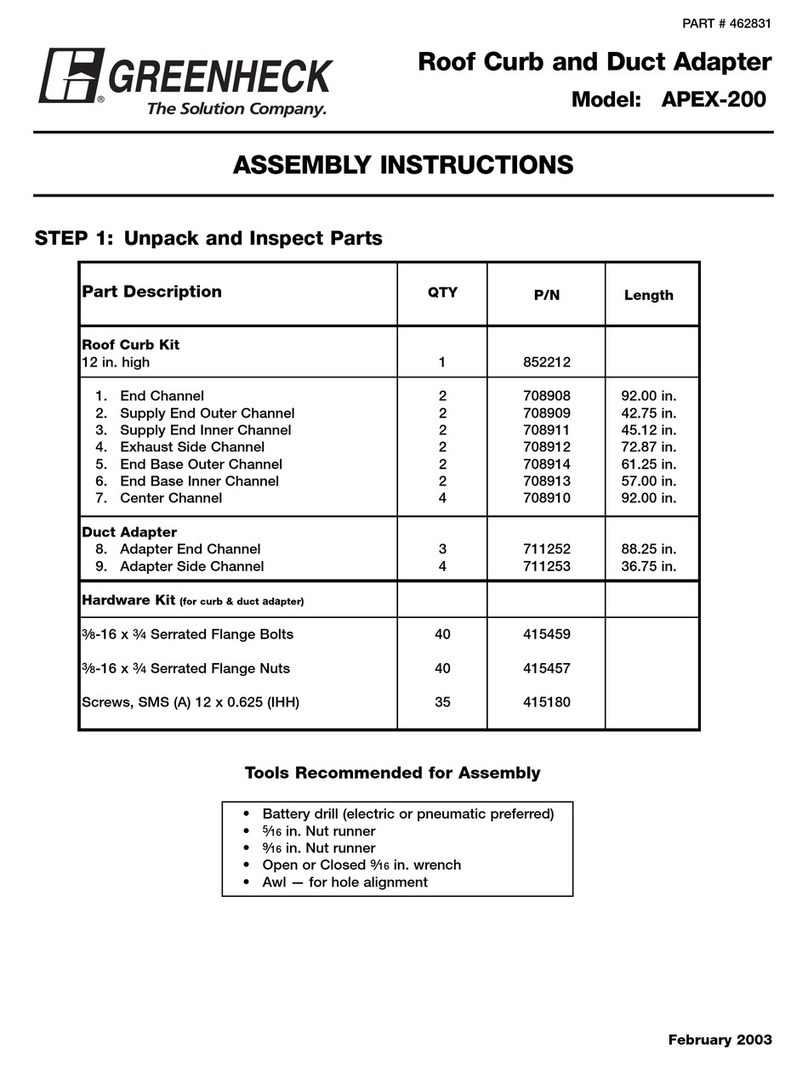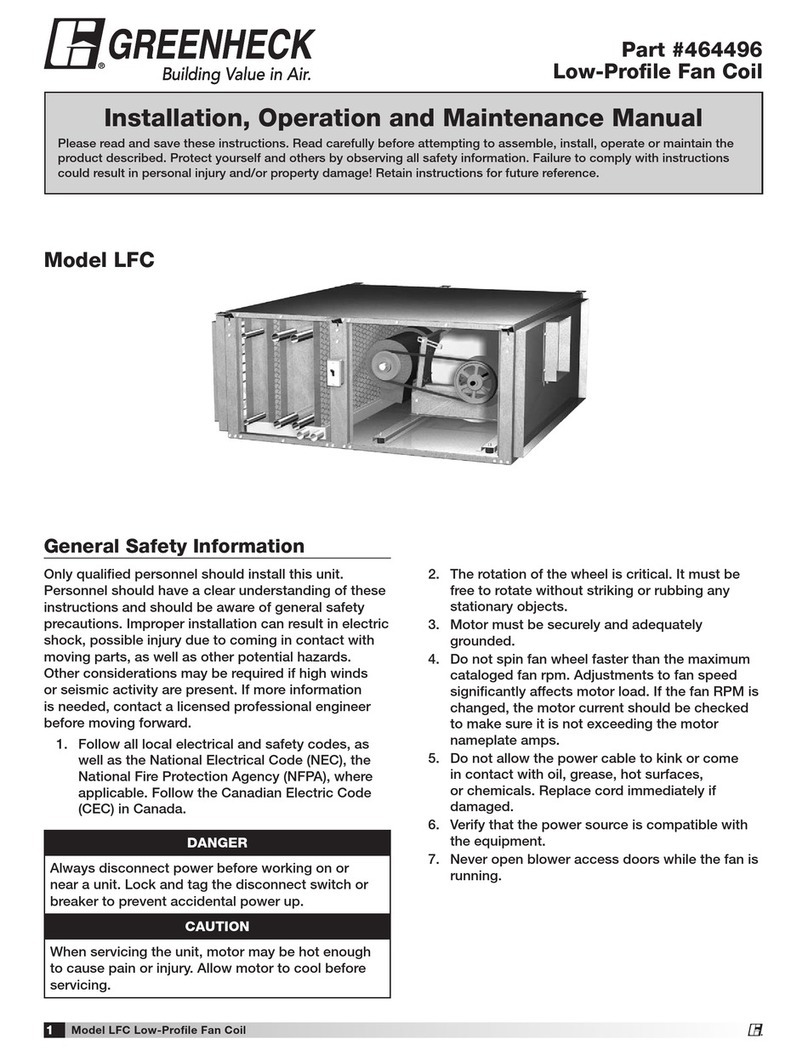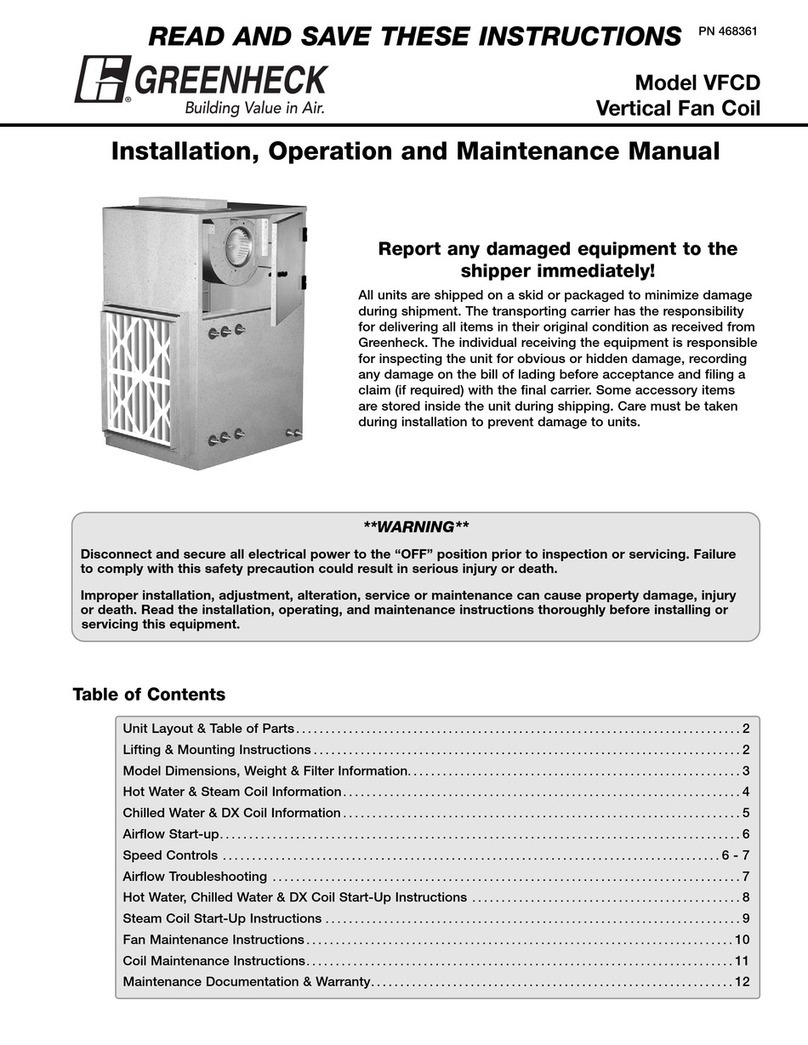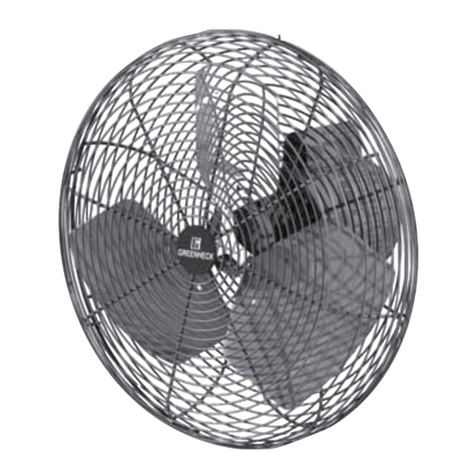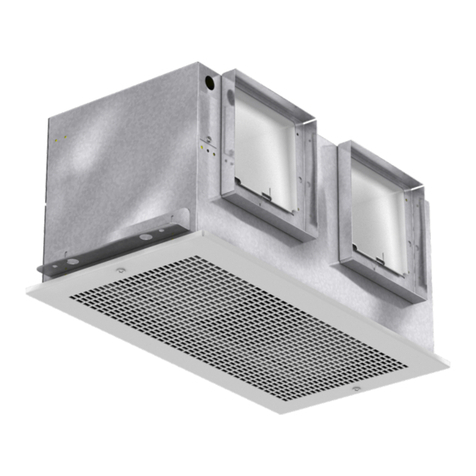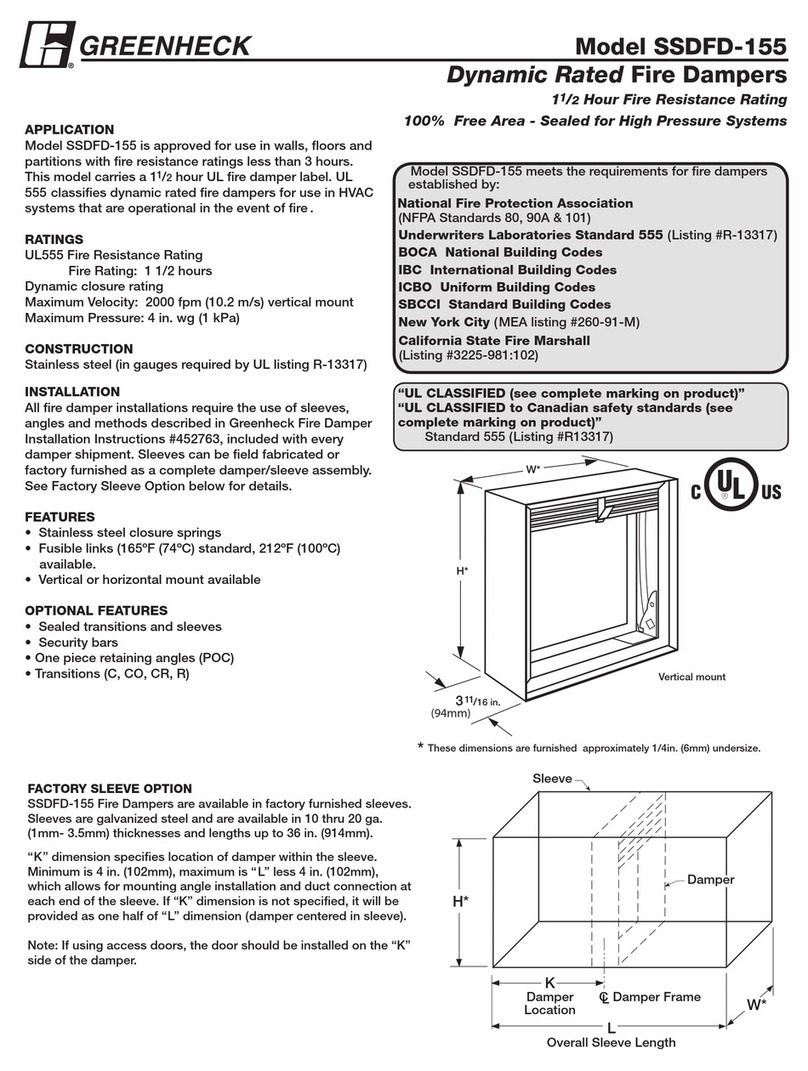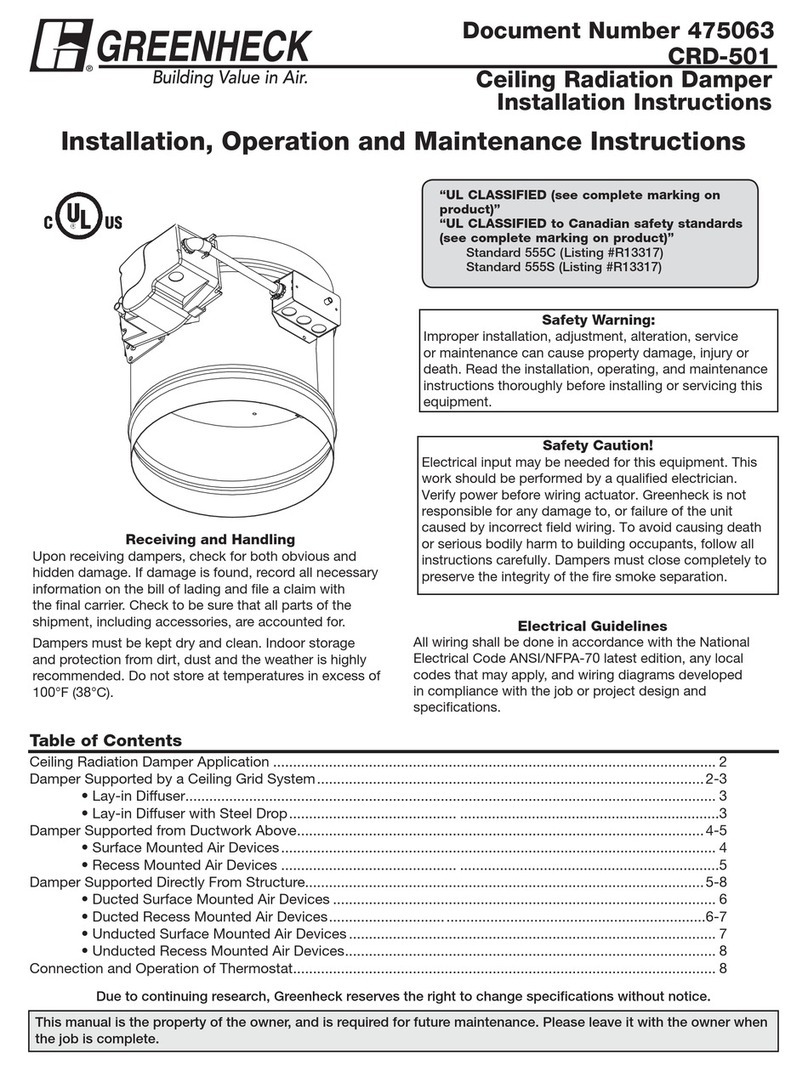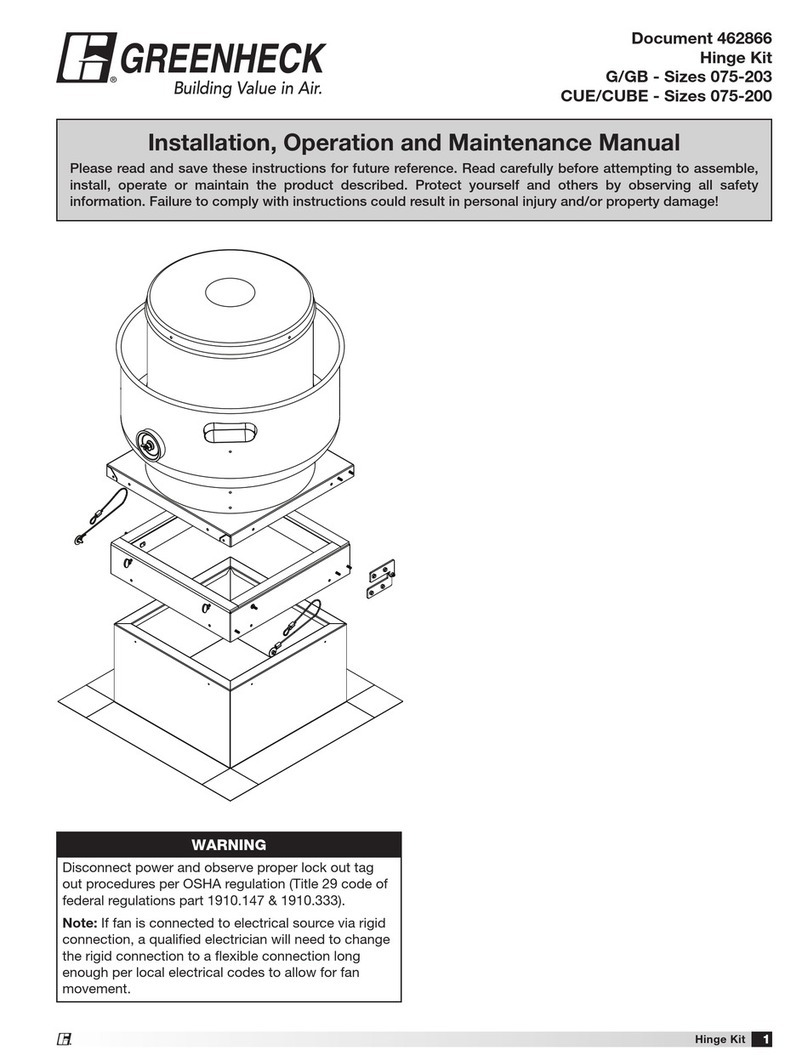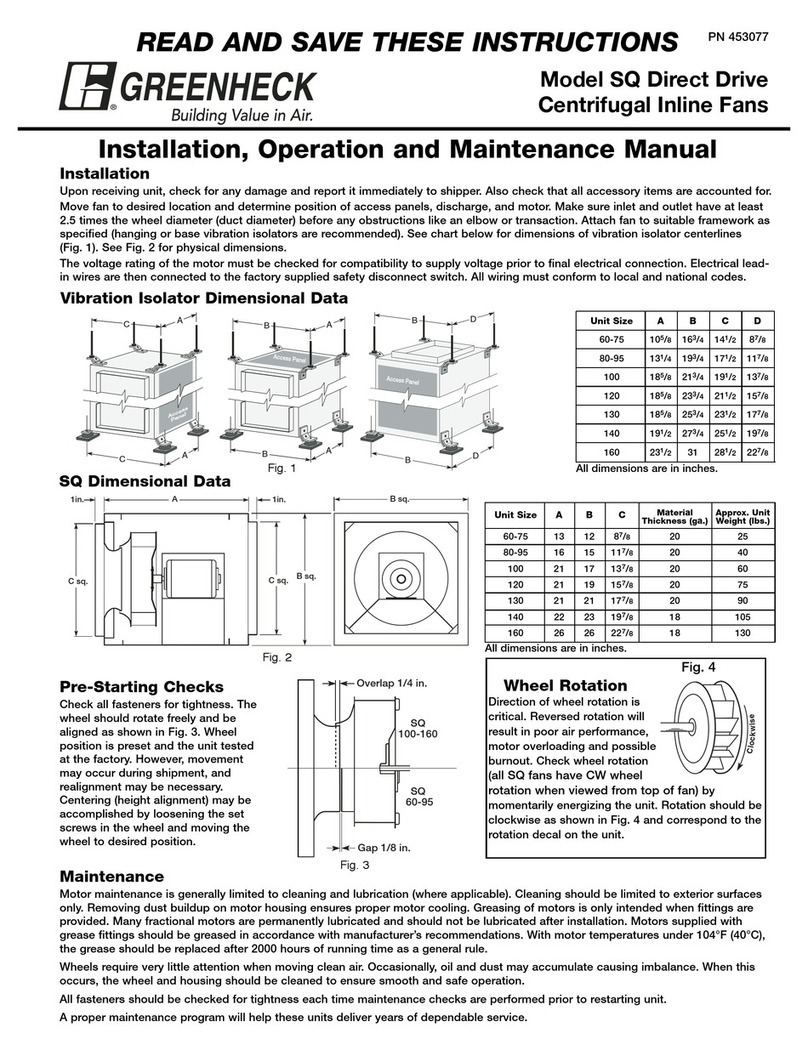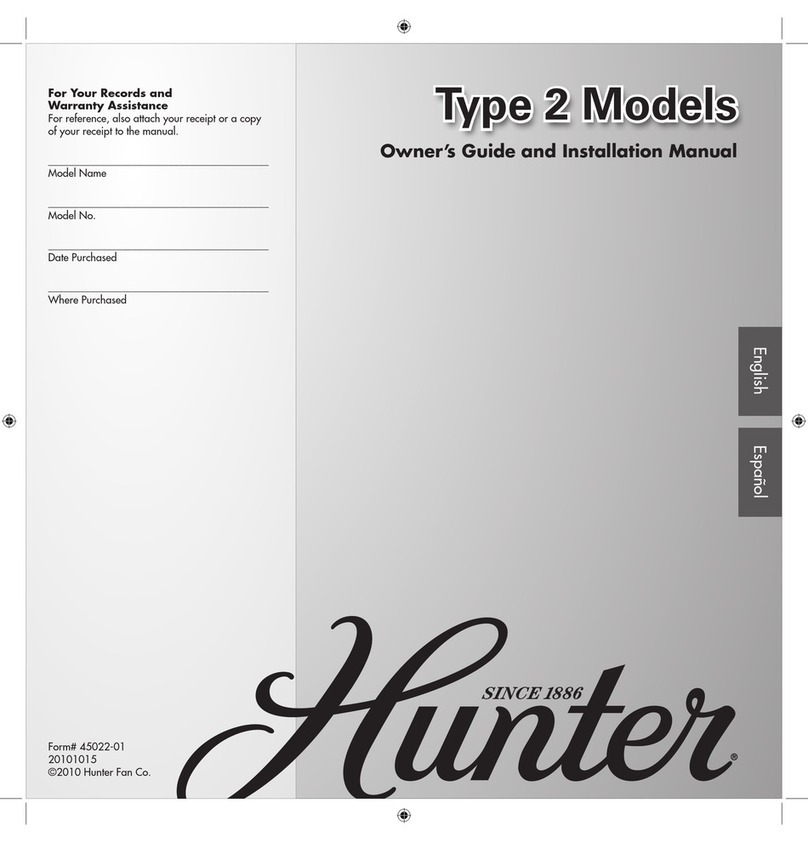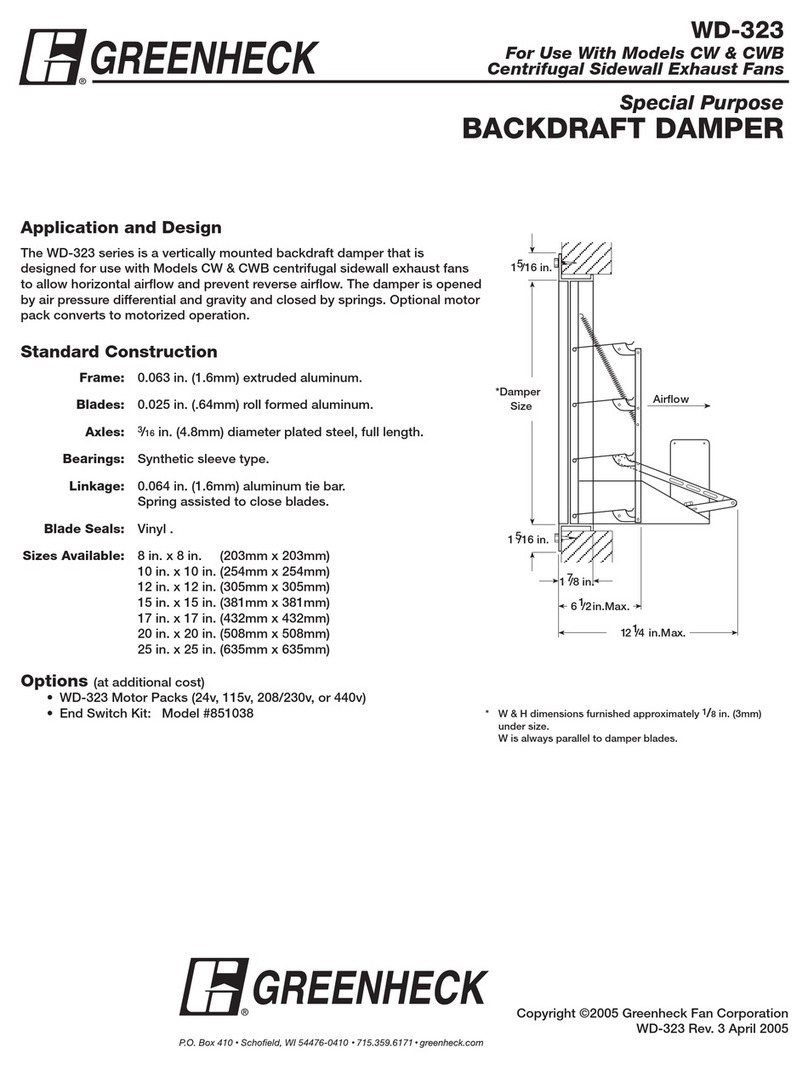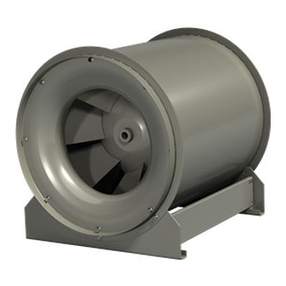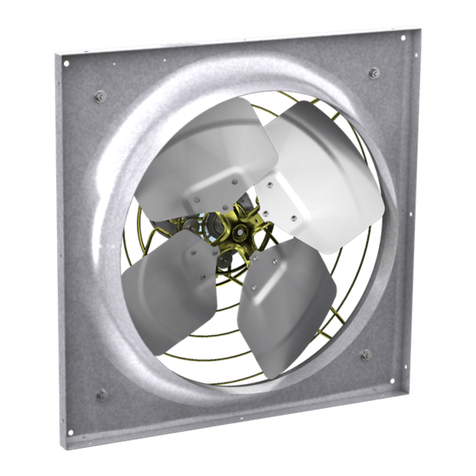Fan Application No. FA/103-00
Writing the Bearing Specification
Basic Rating Life, L10 is a useful tool when
specifying a given level of bearing construction.
When required to provide a given L10 life, all
equipment manufacturers must supply the same
capacity bearing for a given RPM and shaft
diameter. Also, an 80,000 hour L10 bearing will have
a theoretical life twice as long as a 40,000 hour L10
bearing and hence will last longer in the field.
Here’s Greenheck’s recommendation for a typical
bearing specification:
“Bearings shall be air handling quality, heavy duty
grease lubricated, ball or roller type. Bearings shall
be selected for a Basic Rating Life, (L10) of 80,000
hours at maximum operating speed and
horsepower for each construction level.” (Air
handling quality means the bearings meet the
requirements for use in air handling applications; high
speeds, long life and quiet operation. All bearings are
100% tested for excessive noise levels and bore
dimensions are verified to be within tolerances.)
Note: If all the fan products you are specifying are
from the Greenheck Fan & Vent catalog, you can
specify L10 100,000 hour life bearings at no extra
charge.
The chart below provides another way to look at
the expected bearing life. Assuming you specified
Greenheck’s standard bearing life of L10 80,000
hours and your fans run an average of 8 hours per
day, you can expect 27.5 years of life on 90 percent
of the bearings.
In most cases, the Basic Rating Life will be much
greater than shown because the bearings are
selected for the maximum RPM and horsepower for
each size and fan class. Most fans are selected
significantly below their maximum fan rpm.
*Bearings with a L10 200,000 hour life are optional
for most centrifugal and vane axial products.
However, in most cases, it is not practical to specify
L10 200,000 because of the associated cost. (And, do
you really need the bearings to last for 68 years?) It
is more practical for your customer to spend the
additional money on maintenance.
Avoid writing bearings specifications without
having the correct Basic Rating Life (L10 or L50)
terms in front of the required hours of life. If your
specification reads 200,000 hour bearing life, your
chance of getting what you want is minimal. Some
suppliers will assume L50 200,000 life is all that’s
required and you will end up with an inferior
bearing system. Other suppliers will assume you
are specifying the optional L10 200,000 hour life and
add unnecessary cost. The best suppliers will ask
for a confirmation of the L10 life required.
No Guarantee
Bearing Basic Rating Life is theoretical and is based
on a collection of statistics. Specifying a L10 life
does not guarantee that the fan bearings will have a
90% reliability when installed on a fan in the real
world. The calculation for Basic Rating Life
assumes proper lubrication is provided, no shock or
vibration exists, alignment is virtually perfect, no
debris enters the bearings and ambient
temperatures are not extreme. In the real world,
none of these conditions are realistic and the
“installed life” of the bearing will depend on the
application and maintenance.
To get as close as possible to the specified life, the
installer and end user must follow the
recommendations in the manufacturer’s installation
and maintenance instructions. Once the bearing life
expectancy is clearly defined, that information can
then be combined with other bearing requirements
to select the most appropriate bearing for each
application.
Bearing selection
Most manufacturers use some type of bearing
selection program that calculates equivalent bearing
loads and bearing life. Some of the main selection
criteria include shaft diameter and weight; lubricant
viscosity; motor horsepower; fan sheave pitch
diameter, weight and location on the shaft; fan
speed; fan wheel weight; bearing and wheel
L10 Life Average running hours per day
81624
80,000 27.5 yrs 13.7 yrs 9.2 yrs
100,000 34.3 yrs 17.2 yrs 11.4 yrs
200,000* 68.6 yrs 34.3 yrs 22.8 yrs
*Years of bearing life for fans running seven days a week,
fifty two weeks per year.
